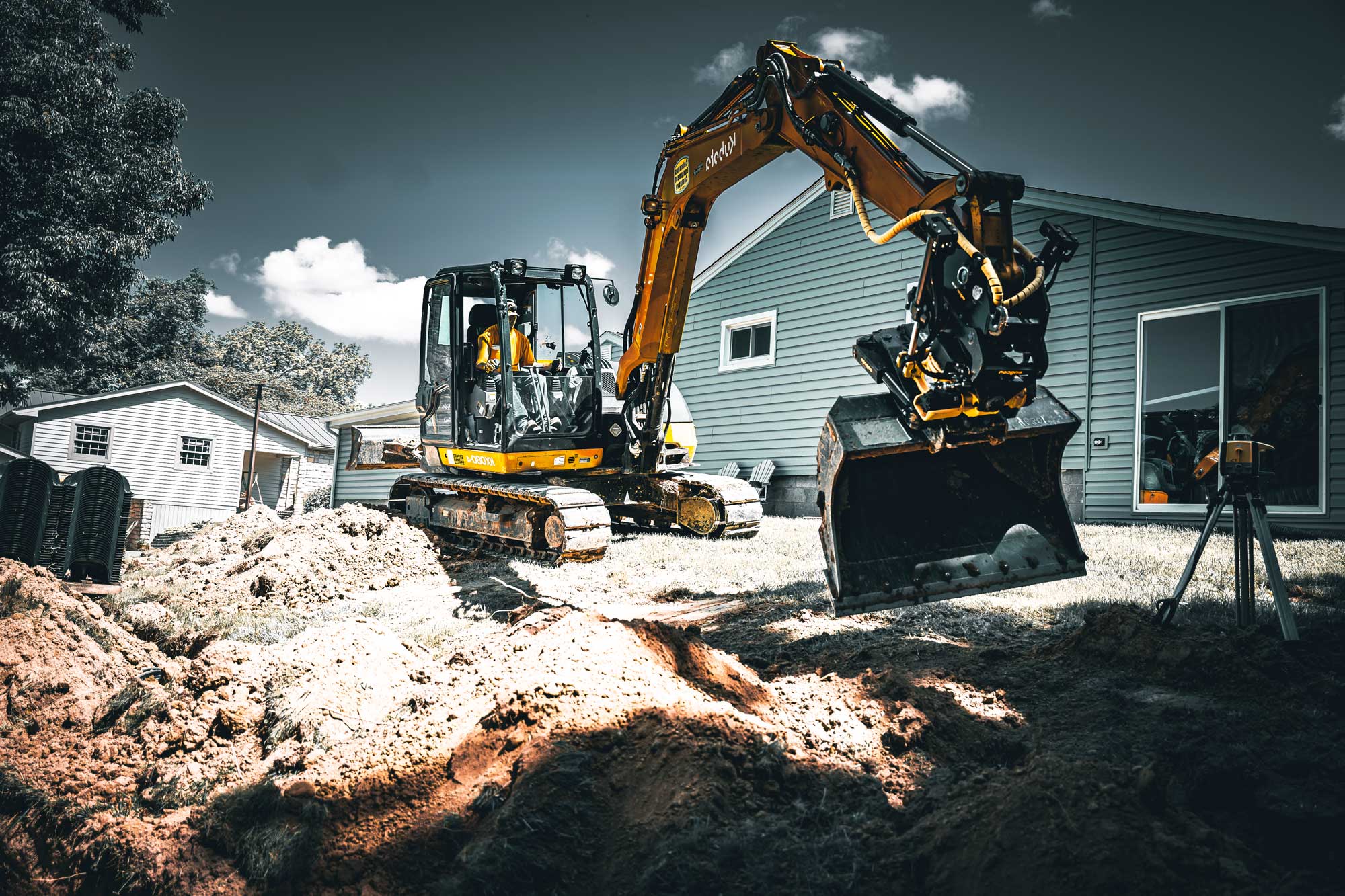Professional Septic Ohio - Relied On Septic Tank Experts in Ohio
Professional Septic Ohio - Relied On Septic Tank Experts in Ohio
Blog Article
In-Depth Exploration: The Science Behind Superior Excavation Practices
From ancient hand tools to contemporary hydraulic excavators, the evolution of excavation methods has actually been a testament to human resourcefulness and technical advancements. What truly establishes superior excavation practices apart is a deep understanding of geological principles, coupled with the application of advanced tools and approaches.
Evolution of Excavation Methods
Throughout background, the evolution of excavation methods has played an important role beforehand building methods and historical discoveries. From the fundamental devices made use of by our ancestors to the sophisticated machinery utilized in modern-day times, the progression of excavation methods has substantially transformed exactly how we approach various tasks.
In old times, hands-on labor with fundamental tools such as shovels, pickaxes, and wheelbarrows was the main approach of excavation. This labor-intensive procedure restricted the depth and range of excavations, frequently causing slow progression and restricted access to particular sites. As worlds progressed, so did the devices and techniques used for excavation.
The Industrial Revolution noted a transforming factor in excavation methods with the intro of steam-powered machinery. In contemporary times, innovation plays a crucial duty in excavation, with innovations like General practitioner systems, drones, and 3D scanning enhancing precision and efficiency in the field.
Role of Modern Technology in Excavation

The integration of innovative modern technology has basically revolutionized the area of excavation, boosting accuracy and performance to extraordinary degrees. Among the essential technical improvements that has actually dramatically influenced excavation practices is the usage of general practitioner systems. These systems permit precise mapping of excavation websites, enabling drivers to accurately situate below ground energies and structures. Additionally, using telematics in excavation tools has actually made it possible for real-time tracking of device performance, resulting in aggressive maintenance and boosted operational productivity.
Additionally, the arrival of 3D modeling and simulation software application has structured the preparation process for excavation projects. Engineers and operators can currently envision the whole excavation process prior to beginning, determining potential obstacles and maximizing process. Along with this, the execution of drones in excavation activities has actually promoted aerial surveys, volumetric measurements, and website evaluations with unequaled rate and accuracy.
Geological Concepts in Excavation
An understanding of geological principles is important for guaranteeing the structural integrity and stability of excavation sites. Geological factors play a critical duty in figuring out the feasibility and safety and security of excavation tasks (dump truck companies in ohio). One essential geological concept to consider is the kind of dirt or rock present at the site. Different soil kinds, such as sand, gravel, or clay, have varying levels of security and require different excavation strategies. As an example, natural dirts like clay may need additional assistance to avoid collapses, while sandy dirts may be vulnerable to erosion during excavation.
Furthermore, the geological framework of the location, including mistakes, fractures, and rock developments, need to be carefully evaluated to identify prospective dangers and obstacles. Digging deep into near fault lines or unsteady rock developments can lead to instability and potential threats. By performing comprehensive geological studies and evaluation, excavators and designers can create approaches to alleviate risks and make certain the successful completion of excavation jobs. Ultimately, integrating geological concepts right into excavation practices is critical for accomplishing secure, reliable, and sustainable results.

Most Recent Devices for Excavation
In the realm of excavation methods, contemporary developments in devices have actually changed the effectiveness and precision of excavation processes. These drones can supply thorough aerial surveys of excavation websites, providing real-time information on topography and possible hazards.
An additional cutting-edge tool acquiring appeal is the application of 3D printing modern technology for developing custom-made excavation tools. This permits the manufacturing of specialized tools that are customized to the specific needs of a task, enhancing efficiency and minimizing downtime.
Furthermore, innovations in products scientific research have led to the growth of more powerful and a lot more long lasting excavation tools. excavating ohio. check Tungsten carbide-tipped excavator accessories, as an example, offer premium efficiency in difficult ground conditions, boosting efficiency on-site
Science's Effect on Excavation Practices

Furthermore, scientific research on soil technicians and geotechnical design has supplied valuable understandings into dirt behavior, permitting excavation experts to make enlightened decisions concerning excavation methods and soil stablizing techniques. Overall, science continues to drive innovation and renovation in excavation practices, making excavation projects extra effective, affordable, and sustainable.

Conclusion
Finally, the development of excavation techniques has been greatly affected by innovations in modern technology and a deeper understanding of geological concepts. The most recent tools and tools used in excavation have enhanced efficiency and precision in the area. The application of scientific expertise has actually significantly improved excavation methods, leading to a lot more reliable and lasting methods for excavating different kinds of products.
In the world of excavation methods, contemporary developments in devices have actually changed the effectiveness and accuracy of excavation processes. By leveraging clinical concepts, the excavation sector has actually been able to considerably improve effectiveness, accuracy, and safety in excavation procedures. GPR permits excavation groups to non-invasively check and map subsurface structures, utilities, my response and potential risks, allowing them to prepare excavation tasks with better precision and decreased risk of accidents.
In addition, clinical research study on dirt technicians and geotechnical design has actually offered valuable insights into soil habits, allowing excavation professionals to make enlightened decisions pertaining to excavation approaches and dirt stablizing strategies. In general, science proceeds to drive innovation and renovation in excavation methods, making excavation tasks a over at this website lot more reliable, economical, and sustainable.
Report this page